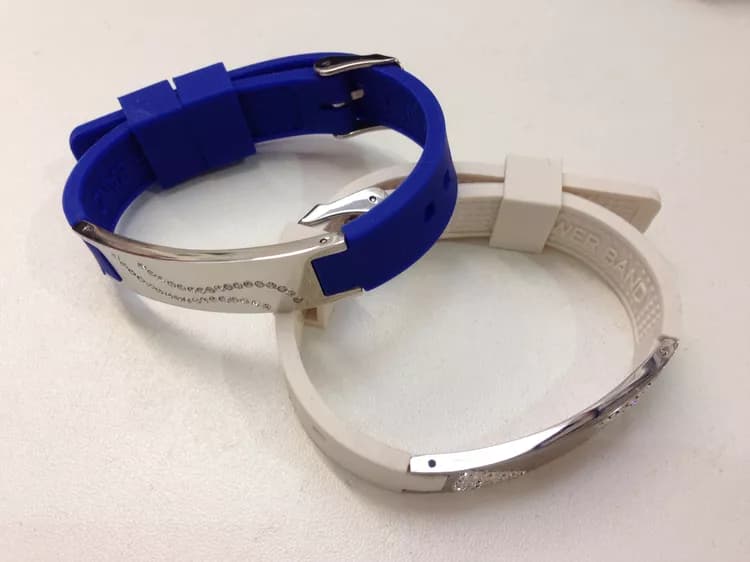What is Magnet Therapy?
Magnet therapy, also known as Magnotherapy or Magnetic Therapy, is an alternative form of therapy that utilizes the force of magnets to provide pain relief. The magnetic field produced by a magnet is believed to have the capability of relieving pain. The magnetic therapy market claims that magnet strengths between 300 and 5,000 G can relieve pain.
- G = Gauss, unit used to measure magnet strength
- The earth’s magnetic field is about 0.5G
- The magnets found in an MRI (magnetic resonance imaging) is 15,000G or higher
History of Magnet Therapy:
Therapeutic uses of magnets date back to 3000 BC. Most notably, it is documented that Cleopatra slept with Lodestone (a naturally magnetized mineral) in the hopes of maintaining her youthful skin. In the 15th century, a Swiss physician believed that the inflammatory process (a biological process that occurs in response to harmful stimuli), could be influenced by magnets. Over the centuries, magnets have been studied for their healing properties on multiple conditions (ex. rheumatic diseases, sciatica, neuralgia, and cancer) but specifically with an emphasis on pain relief. One reason for magnetic therapy’s popularity is due to many celebrity devotees such as Bill Clinton, Michael Jordon, and Queen Elizabeth II.
How does Magnet Therapy Work?
This therapy is believed to heal a variety of pain (Example: foot and back pain) along with numerous conditions (Example: arthritis and fibromyalgia). The three main factors considered when using Magnetic Therapy are:
- The affected tissue (such as joints)
- The strength of the magnet
- The frequency of therapy
Magnets used for therapy could be manipulated into a variety of materials of daily use, and here are just a few:
- Bracelets
- Insoles
- Neck braces
- Knee bands
- Pillows
The strength of the magnet and the amount of time taken to have a noticeable effect on an ailment can vary between people and conditions. Additionally, although magnets are considered to be safe when placed on skin, and complications and side effects are relatively rare, it is important to consult a physician before use.
Scientific research on benefits of Magnet Therapy:
There is a lack of consistency on the effect Magnetic Therapy has on various health conditions. Despite the extraordinary claims of how this therapy can heal, it remains to be proven for any health-related issue. Due to this lack of proof, this therapy should not replace conventional, proven therapies.
Examples of studies on Magnetic Therapy:
- A case study of a 51-year old paraplegic woman claims that the therapy completely healed a one-year old abdominal wound. Despite this extraordinary claim, there are multiple other factors that could explain this result. For example, there could have been a delayed effect of a previously prescribed therapy.
- There were no significant differences seen in carpal tunnel pain in patients who received magnetic therapy compared to those who did not. However, this could be explained by the dosage being inadequate or inappropriate for the condition.
- Some trials have shown magnetic fields inducing analgesia. There is some difficulty keeping the patients blind of their treatment, since those with the magnet feel a pulling sensation because of ferromagnetic surfaces in many places. This could distract the patient and could taint the result because of the placebo effect. This is the phenomenon when a person improves because they expect improvement and not from the efficacy of the therapy.
Some scientists argue that the therapy seems unrealistic by theorizing thus: if magnets could influence human tissue, an MRI machine that produces massive magnetic fields should result in profound effects. However, MRI machines are reported to have neither deleterious nor salubrious effects on human tissues.
It has been advertised that magnets could treat cancers and increase one’s longevity. Such claims have not been supported by research.
Despite the claims made by the magnetic therapy market and the popularity of this therapy especially with celebrities, there is too much inconsistency in scientific research to either prove or disprove the beneficial effects of magnetic therapy on any medical condition.
The risks of Magnet Therapy:
- Magnet may interfere with medical devises (ex. pacemakers, insulin pumps) and thus become unsafe for some patients
- If an individual decides to “self-treat” with Magnetic Therapy for an ailment, he/she might be ignoring an underlying condition. This could cause future health problems in that individual.
A word of caution:
Please consult with your healthcare provider before initiating alternative therapies. Tell your healthcare provider about any complementary and alternative practices you use. This will help your healthcare professional evaluate the condition of your health better and take appropriate clinical steps to assist you. Full disclosure to your healthcare provider will help ensure coordinated and safe care.
Written by Monique Richards
References:
History of magnet therapy. (n.d.). Retrieved February 26, 2016, from http://www.magnetictherapyfacts.org/history.asp
NCCIH. (2008). Retrieved February 25, 2016, from https://nccih.nih.gov/health/magnet/magnetsforpain.htm
Colbert, A. P., Markov, M. S., & Souder, J. S. (2008). Static Magnetic Field Therapy: Dosimetry Considerations. The Journal of Alternative and Complementary Medicine, 14(5), 577-582.
Finegold, L. (2006). Magnet therapy. Bmj, 332(7532), 4-4.
Szor, JK., & Topp, R. (1998). Use of magnet therapy to heal an abdominal wound: a case study. Ostomy Wound Manage, 44(5), 24-9.
Carter, R., Aspy, CB., & Mold, J. (2002). The Effectiveness of Magnet Therapy for Treatment of Wrist Pain Attributed to Carpal Tunnel Syndrome. J Fam Pract., 51(1), 38-40.
Eccles, N. K. (2005). A Critical Review of Randomized Controlled Trials of Static Magnets for Pain Relief. The Journal of Alternative and Complementary Medicine, 11(3), 495-509.
Related Articles
Test Your Knowledge
Asked by users
Related Centers
Related Specialties
Related Physicians
Related Procedures
Related Resources
Join DoveHubs
and connect with fellow professionals


0 Comments
Please log in to post a comment.